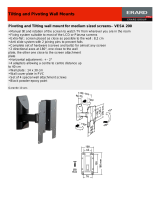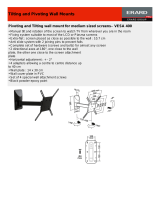
Table of contents
1 Product Features ............................................................................................................... 1
HP LCD Monitors ..................................................................................................................... 1
2 Setting Up the Monitor ...................................................................................................... 3
Unfolding the Monitor Pedestal Base .......................................................................................... 3
Attaching the Stand to the HP LA1956x Monitor .......................................................................... 4
Rear Components ..................................................................................................................... 5
Connecting the Cables ............................................................................................................. 6
Front Panel Controls ............................................................................................................... 10
Adjusting the Monitor ............................................................................................................. 11
Turning on the Monitor ........................................................................................................... 13
Connecting USB Devices ......................................................................................................... 14
Removing the Monitor Pedestal Base ........................................................................................ 15
Removing the Stand from the HP LA1956x Monitor ..................................................... 16
Mounting the Monitor .............................................................................................. 17
Locating the Rating Labels ....................................................................................................... 18
Installing a Cable Lock ............................................................................................................ 18
3 Finding More Information ............................................................................................... 19
Reference Guides ................................................................................................................... 19
Product Support ..................................................................................................................... 19
Appendix A Technical Specifications ................................................................................... 20
LA1956x Model .................................................................................................................... 20
LA2006x Model .................................................................................................................... 21
LA2206x Model .................................................................................................................... 22
LA2306x Model .................................................................................................................... 23
Recognizing Preset Display Resolutions ..................................................................................... 25
LA1956x Model ..................................................................................................... 25
LA2006x Model ..................................................................................................... 25
LA2206x Model ..................................................................................................... 26
LA2306x Model ..................................................................................................... 26
Entering User Modes .............................................................................................................. 27
Energy Saver Feature ............................................................................................................. 27
ENWW v
























